Manorama, Manoramā, Manas-rama, Mano-rama: 36 definitions
Introduction:
Manorama means something in Hinduism, Sanskrit, Jainism, Prakrit, Buddhism, Pali, the history of ancient India, Marathi, Hindi, biology. If you want to know the exact meaning, history, etymology or English translation of this term then check out the descriptions on this page. Add your comment or reference to a book if you want to contribute to this summary article.
Alternative spellings of this word include Manoram.
In Hinduism
Shaktism (Shakta philosophy)
Source: Wisdom Library: Śrīmad Devī BhāgavatamManoramā (मनोरमा):—First wive of king Dhruvasandhi (son of Puṣpa) of the Solar Dynasty. Manoramā gave birth to the beautiful child named Sudarśana. See the Devī-bhāgavata-purāṇa 3.14 (The glories of Devī).
Source: Google Books: ManthanabhairavatantramManoramā (मनोरमा) refers to “she who is beautiful”, according to the Manthānabhairavatantra, a vast sprawling work that belongs to a corpus of Tantric texts concerned with the worship of the goddess Kubjikā.—Accordingly, “Nādamaṅgalyā (Vinayā) is in the north-east. She has the face of a bird and three eyes. She sits on a pig. She has ten arms and is very fierce. In the right hands she holds a sword, lance, bow, double-headed drum, and skeleton; in the left, a dagger, a skull, trident, fetter, and goad. She has matted hair and is the goddess who bestows boons in the north-east. Worshipped, there is success in whatever one desires. Full of the sixteen energies, she, the guardian of the door, is beautiful [i.e., manoramā]”.
Source: Kamakoti Mandali: The Yoginis of Narasimha VyuhaManoramā (मनोरमा) is the name of a Mātṛkā-Śakti created by Mahārudra in order to control the plague of demons created by Andhakāsura.—Accordingly, Andhaka-Asura tried to kidnap Umā (Devī Pārvatī), and was fiercely attacked by Mahārudra who shot arrows at him from his mahāpināka. when the arrows pierced the body of Andhakāsura, drops of blood fell to earth and from those drops, thousands of Andhakas arose. To control this plague of demons, Mahārudra created Mātṛkā-Śaktis [viz., Manoramā] and ordered them to drink the blood of the demons and drain them dry.
Source: Kamakoti Mandali: Nrisimha matrika-mandalaManoramā (मनोरमा) refers to one of the various Mātṛkā-Śaktis created by Rudra in order to destroy the clones that spawned from Andhaka’s body.—Accordingly, [...] Andhakāsura attempted to abduct Girājanandinī (Pārvatī) and thus ensued a fierce battle between Andhakāsura and the great Rudra, the Lord of Umā. Like raktabīja, every drop of blood that fell from the body of Andhaka created another Asura like him and in no time, the entire world was filled with Andhakas. To destroy the growing number of Andhakas, Rudra created innumerable Mātṛkā-Śaktis [viz., Manoramā]. These Śaktis of immense power at once began to drink every drop of blood that flowed from the body of Andhaka, but they could still not effectively contain the emergence of more and more demons.

Shakta (शाक्त, śākta) or Shaktism (śāktism) represents a tradition of Hinduism where the Goddess (Devi) is revered and worshipped. Shakta literature includes a range of scriptures, including various Agamas and Tantras, although its roots may be traced back to the Vedas.
Natyashastra (theatrics and dramaturgy)
Source: Wisdom Library: Nāṭya-śāstraManoramā (मनोरमा) is the name of an Apsara created for the sake of a type of dramatic perfomance. Acording to the Nāṭyaśāstra 1.46-51, after Brahmā asked Bharata for materials necessary for the Graceful Style (kaiśikī: a type of performance, or prayoga), Bharata answered “This Style cannot be practised properly by men except with the help of women”. Therefore, Brahmā created with his mind several apsaras (celestial nymphs), such as Manoramā, who were skillful in embellishing the drama.
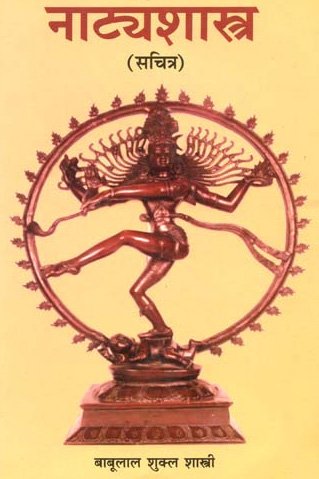
Natyashastra (नाट्यशास्त्र, nāṭyaśāstra) refers to both the ancient Indian tradition (shastra) of performing arts, (natya—theatrics, drama, dance, music), as well as the name of a Sanskrit work dealing with these subjects. It also teaches the rules for composing Dramatic plays (nataka), construction and performance of Theater, and Poetic works (kavya).
Purana and Itihasa (epic history)
Source: Wisdom Library: The Matsya-purāṇaManoramā (मनोरमा) is the name of a mind-born ‘divine mother’ (mātṛ), created for the purpose of drinking the blood of the Andhaka demons, according to the Matsya-purāṇa 179.8. The Andhaka demons spawned out of every drop of blood spilled from the original Andhakāsura (Andhaka-demon). According to the Matsya-purāṇa 179.35, “Most terrible they (e.g., Manoramā) all drank the blood of those Andhakas and become exceedingly satiated.”
The Matsyapurāṇa is categorised as a Mahāpurāṇa, and was originally composed of 20,000 metrical verses, dating from the 1st-millennium BCE. The narrator is Matsya, one of the ten major avatars of Viṣṇu.
Source: archive.org: Puranic Encyclopedia1) Manoramā (मनोरमा).—Wife of Dhruvasandhi King of Kosala. (See under Dhruvasandhi for details).
2) Manoramā (मनोरमा).—A celestial woman. She was the daughter of Kaśyapa Prajāpati, born of his wife Pradhā. (Śloka 50, Chapter 65, Ādi Parva). She participated in the Janmotsava of Arjuna. (Śloka 62, Chapter 122, Ādi Parva).
3) Manoramā (मनोरमा).—Once by his spiritual powers the sage Uddālaka brought the river Sarasvatī to his place of yajña and that diversion was then known as Manoramā. (Śloka 25, Chapter 38, Śalya Parva).
Source: archive.org: Shiva Purana - English TranslationManoramā (मनोरमा) refers to “being charming”, according to the Śivapurāṇa 2.3.34 (“The Story of Anaraṇya”).—Accordingly, as Vasiṣṭha said to Himavat (Himācala): “[...] Thus the good sage spent a long time with his mind utterly agitated by pangs of love. Once while the good sage was on his way to the river Puṣpabhadrā for taking his bath he happened to see the young maiden Padmā who was as charming (manoramā) as goddess Lakṣmī. The sage asked the persons standing by—‘Who is this girl?’ The people, afraid of the curse bowed to the sage and replied. [...]”.
Source: Cologne Digital Sanskrit Dictionaries: The Purana Index1a) Manoramā (मनोरमा).—A mind-born mother.*
- * Matsya-purāṇa 179. 26.
1b) An Apsarasa.*
- * Vāyu-purāṇa 69. 6.
Manoramā (मनोरमा) refers to the name of a Lady mentioned in the Mahābhārata (cf. I.59.48, I.65). Note: The Mahābhārata (mentioning Manoramā) is a Sanskrit epic poem consisting of 100,000 ślokas (metrical verses) and is over 2000 years old.

The Purana (पुराण, purāṇas) refers to Sanskrit literature preserving ancient India’s vast cultural history, including historical legends, religious ceremonies, various arts and sciences. The eighteen mahapuranas total over 400,000 shlokas (metrical couplets) and date to at least several centuries BCE.
Vyakarana (Sanskrit grammar)
Source: Wikisource: A dictionary of Sanskrit grammarManoramā (मनोरमा).—(I) the popular name given to the commentary प्रौढमनेरमा (prauḍhamaneramā) on the Siddhāntakaumudī of भट्टोजीदीक्षित (bhaṭṭojīdīkṣita) by the author himself; the commentary is a scholarly one and very extensive; and its first portion only upto the end of Kāraka is generally read in the Sanskrit Pāṭhaśālās;(2) name of a commentary on the Madhyasiddhāntakaumudī by Rāmasarman; (3) name given to a treatise discussing roots given in the Kātantra Grammar written by रमानाथशर्मा (ramānāthaśarmā) in the sixteenth century. The work is called कातन्त्रधातुवृत्ति (kātantradhātuvṛtti) also.
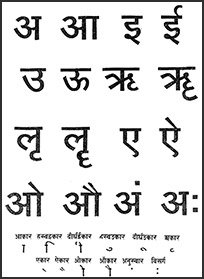
Vyakarana (व्याकरण, vyākaraṇa) refers to Sanskrit grammar and represents one of the six additional sciences (vedanga) to be studied along with the Vedas. Vyakarana concerns itself with the rules of Sanskrit grammar and linguistic analysis in order to establish the correct context of words and sentences.
Chandas (prosody, study of Sanskrit metres)
Source: Shodhganga: a concise history of Sanskrit Chanda literatureManoramā (मनोरमा) refers to one of the 135 metres (chandas) mentioned by Nañjuṇḍa (1794-1868 C.E.) in his Vṛttaratnāvalī. Nañjuṇḍa was a poet of both Kannada and Sanskrit literature flourished in the court of the famous Kṛṣṇarāja Woḍeyar of Mysore. He introduces the names of these metres (e.g., Manoramā) in 20 verses.
Source: Journal of the University of Bombay Volume V: Apabhramsa metres (2)Manoramā (मनोरमा) (also called Vijayā) is the name of a catuṣpadi metre (as popularly employed by the Apabhraṃśa bards), as discussed in books such as the Chandonuśāsana, Kavidarpaṇa, Vṛttajātisamuccaya and Svayambhūchandas.—Manoramā has 18 mātrās in each of its four lines, divided into the groups of 4, 4, 4, [ISI] and [S] mātrās.
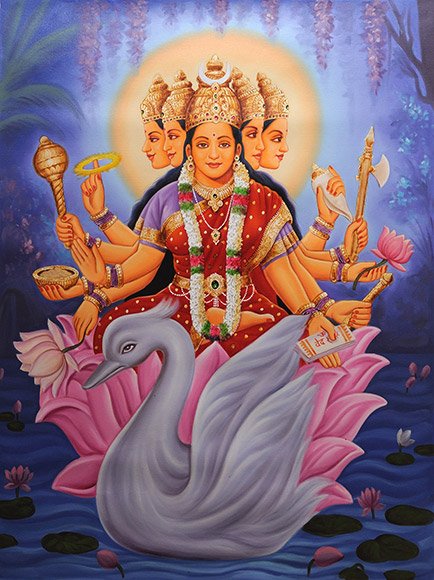
Chandas (छन्दस्) refers to Sanskrit prosody and represents one of the six Vedangas (auxiliary disciplines belonging to the study of the Vedas). The science of prosody (chandas-shastra) focusses on the study of the poetic meters such as the commonly known twenty-six metres mentioned by Pingalas.
Kavya (poetry)
Source: Wisdom Library: KathāsaritsāgaraManoramā (मनोरमा) is the wife of king Ugrabhaṭa from Rāḍhā, according to the Kathāsaritsāgara, chapter 74. Accordingly, as a great elephant (gajendra) said to Pracaṇḍaśakti: “... [king Ugrabhaṭa] was living happily in the city of Rāḍhā with his wife Manoramā, who was equal to him in birth, there came to his court from a foreign country an actor named Lāsaka”.
The Kathāsaritsāgara (‘ocean of streams of story’), mentioning Manoramā, is a famous Sanskrit epic story revolving around prince Naravāhanadatta and his quest to become the emperor of the vidyādharas (celestial beings). The work is said to have been an adaptation of Guṇāḍhya’s Bṛhatkathā consisting of 100,000 verses, which in turn is part of a larger work containing 700,000 verses.
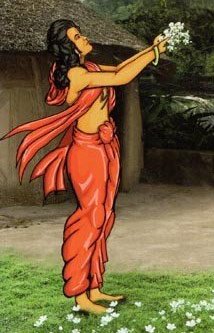
Kavya (काव्य, kavya) refers to Sanskrit poetry, a popular ancient Indian tradition of literature. There have been many Sanskrit poets over the ages, hailing from ancient India and beyond. This topic includes mahakavya, or ‘epic poetry’ and natya, or ‘dramatic poetry’.
Vastushastra (architecture)
Source: Brill: Śaivism and the Tantric Traditions (architecture)Manorama (मनोरम) refers to a “pleasing” (residence), according to the Devyāmata (chapter 105).—Accordingly, [while describing the construction of residence for initiates]—“[...] The residence for the initiates should be built not too far from water. Initiates should live in a fine, unpolluted place. The residence should have one, two, or three rooms. Or a four-roomed residence should be built, according to funding. A pleasing [i.e., manorama] hiraṇyanābha or sukṣetra may be built”.
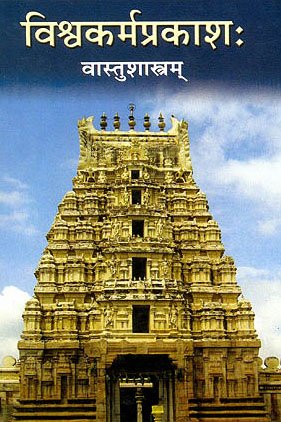
Vastushastra (वास्तुशास्त्र, vāstuśāstra) refers to the ancient Indian science (shastra) of architecture (vastu), dealing with topics such architecture, sculpture, town-building, fort building and various other constructions. Vastu also deals with the philosophy of the architectural relation with the cosmic universe.
Shaivism (Shaiva philosophy)
Source: SOAS University of London: Protective Rites in the Netra TantraManorama (मनोरम) or “beautiful”, and is used to describe Viṣṇu, according to the Netratantra of Kṣemarāja: a Śaiva text from the 9th century in which Śiva (Bhairava) teaches Pārvatī topics such as metaphysics, cosmology, and soteriology.—Accordingly, [verse 13.1-9, while describing the appearance and worship of Viṣṇu, in the form of Nārāyaṇa]—“[...] Or, he should meditate [on Nārāyaṇa] atop Garuḍa, Śrī at his side. [He should visualize Viṣṇu] very white and beautiful (manorama) [with] three faces [that] resemble the moon, six arms, decorated like Varāha Hari, [his hands] endowed with [the shapes of] wish-granting and protection. Śrī is of the same color and holds the same weapons, suitably beautiful and charming before the eyes of Devadeva. [...]”.

Shaiva (शैव, śaiva) or Shaivism (śaivism) represents a tradition of Hinduism worshiping Shiva as the supreme being. Closely related to Shaktism, Shaiva literature includes a range of scriptures, including Tantras, while the root of this tradition may be traced back to the ancient Vedas.
In Jainism
General definition (in Jainism)
Source: Wisdom Library: Jainism1) Manorama (मनोरम) refers to a species of Graiveyaka gods, who are in turn a subclass of the Kalpātīta gods, according to Jain cosmological texts in both the Śvetāmbara and Digambara tradition. The Kalpātīta (those born beyond heavens) represent a sub-species of the Vaimānika gods, which in turn represents the fourth main classification of devas (gods).
The Graiveyakas (e.g., the Maṇoramas) do not bind karmans, are 1-sensed class of beings and have an immovable body, warm splendour, cold lustre, animal state of existence, ānupūrvī and āyus.
2) Manorama (मनोरम) refers to a class of kinnara deities according to both the Digambara and Śvetāmbara traditions. The kinnaras refer to a category of vyantaras gods which represents one of the four classes of celestial beings (devas). The kinnaras are black in complexion and their caitya-vṛkṣas (sacred-tree) is Aśoka according to both traditions.
3) Manorama (मनोरम) refers to a class of mahoraga deities gods according to the Śvetāmbara tradition, while the Digambara does not recognize this class. The mahoraga refer to a category of vyantaras gods which represents one of the four classes of celestial beings (devas). The mahoragas are are dark or black in complexion and the Nāga is their caitya-vṛkṣa (sacred-tree).
The deities such as the Manoramas are defined in ancient Jain cosmological texts such as the Saṃgrahaṇīratna in the Śvetāmbara tradition or the Tiloyapaṇṇati by Yativṛṣabha (5th century) in the Digambara tradition.
Source: archive.org: Trisastisalakapurusacaritra1) Manorama (मनोरम) is the name of Sahasrāra’s vimāna (celestial car), according to chapter 1.2 [ādīśvara-caritra] of Hemacandra’s 11th century Triṣaṣṭiśalākāpuruṣacaritra: an ancient Sanskrit epic poem narrating the history and legends of sixty-three illustrious persons in Jainism. Accordingly, “[...] Sahasrāra with the gods of six thousand palaces came to the Lord of Jinas with the car Manorama”.
2) Manoramā (मनोरमा) refers to one of the two wives of king Ghanaratha, according to chapter 5.4 [śāntinātha-caritra].
3) Manoramā (मनोरमा) refers to one of the daughters of king Nihataśatru, according to chapter 5.4 [śāntinātha-caritra].
4) Manoramā (मनोरमा) is the daughter of Cūḍāmaṇi and king Ibhavāhana from Nāgapura, according to the Jain Ramayana and chapter 7.4 [Rāma and Lakṣmaṇa] of Hemacandra’s 11th century Triṣaṣṭiśalākāpuruṣacaritra: an ancient Sanskrit epic poem narrating the history and legends of sixty-three illustrious persons in Jainism.—Accordingly, “Now in the city Nāgapura lived King Ibhavāhana and his wife? Cūḍāmaṇi, and daughter, Manoramā. When she had reached rising youth, Vajrabāhu married her with a great festival, like the moon marrying Rohiṇī. He took Manoramā and started for his city with his wife’s brother, Udayasundara, accompanying him from devotion. [...]”.
5) Manoramā (मनोरमा) is the daughter of Candramukhī and king Ratnaratha from Ratnapura, according to chapter 7.8 [The abandonment of Sītā].

Jainism is an Indian religion of Dharma whose doctrine revolves around harmlessness (ahimsa) towards every living being. The two major branches (Digambara and Svetambara) of Jainism stimulate self-control (or, shramana, ‘self-reliance’) and spiritual development through a path of peace for the soul to progess to the ultimate goal.
India history and geography
Source: Shodhganga: a concise history of Sanskrit Chanda literature (history)Manoramā (मनोरमा) is the name of a Commentary on Amarakośa on the topic of Grammar & Lexicon ascribed to Raghunātha Dāsa (C. 1680-1750 C.E), a celebrated author of Oḍiśā who composed many work in different disciplines of Sanskrit Literature. Also see the “New Catalogus Catalogorum” XXII. p. 206.

The history of India traces the identification of countries, villages, towns and other regions of India, as well as mythology, zoology, royal dynasties, rulers, tribes, local festivities and traditions and regional languages. Ancient India enjoyed religious freedom and encourages the path of Dharma, a concept common to Buddhism, Hinduism, and Jainism.
Biology (plants and animals)
Source: Google Books: CRC World Dictionary (Regional names)Manorama in India is the name of a plant defined with Jasminum multiflorum in various botanical sources. This page contains potential references in Ayurveda, modern medicine, and other folk traditions or local practices It has the synonym Nyctanthes multiflora Burm. f. (among others).
Example references for further research on medicinal uses or toxicity (see latin names for full list):
· Observationes Botanicae (1788)
· Novae Plantarum Species praesertim Indiae Orientalis (1821)
· A Numerical List of Dried Specimens (2874)
· Flora Indica (1768)
· Gard. Chron. (1881)
· Prodr. (DC.) (1844)
If you are looking for specific details regarding Manorama, for example side effects, pregnancy safety, health benefits, extract dosage, diet and recipes, chemical composition, have a look at these references.

This sections includes definitions from the five kingdoms of living things: Animals, Plants, Fungi, Protists and Monera. It will include both the official binomial nomenclature (scientific names usually in Latin) as well as regional spellings and variants.
Languages of India and abroad
Pali-English dictionary
Source: BuddhaSasana: Concise Pali-English Dictionarymanorama : (adj.) delightful.
Source: Sutta: The Pali Text Society's Pali-English DictionaryManorama refers to: pleasing to the mind, lovely, delightful Sn. 50, 337, 1013; Dh. 58; Pv. II, 958 (phoṭṭhabba), Mhvs 18, 48; VvA. 340.
Note: manorama is a Pali compound consisting of the words mano and rama.

Pali is the language of the Tipiṭaka, which is the sacred canon of Theravāda Buddhism and contains much of the Buddha’s speech. Closeley related to Sanskrit, both languages are used interchangeably between religions.
Marathi-English dictionary
Source: DDSA: The Molesworth Marathi and English Dictionarymanōrama (मनोरम).—a (S) Gratifying to the mind; pleasing, charming, delightful, agreeable.
--- OR ---
manōramā (मनोरमा).—f (S A lovely woman.) An endearing term for a wife or a mistress.
Source: DDSA: The Aryabhusan school dictionary, Marathi-Englishmanōrama (मनोरम).—a Pleasing, charming.
--- OR ---
manōramā (मनोरमा).—f An endearing term for a wife or a mistress.
Marathi is an Indo-European language having over 70 million native speakers people in (predominantly) Maharashtra India. Marathi, like many other Indo-Aryan languages, evolved from early forms of Prakrit, which itself is a subset of Sanskrit, one of the most ancient languages of the world.
Sanskrit dictionary
Source: DDSA: The practical Sanskrit-English dictionaryManorama (मनोरम).—a. attractive, pleasing, agreeable, lovely, beautiful; अरुण- नखमनोरमासु तस्याः (aruṇa- nakhamanoramāsu tasyāḥ) (aṅgulīṣu) Ś.6.11; पुरस्ताद्विमले पात्रे सुविस्तीर्णे मनोरमे (purastādvimale pātre suvistīrṇe manorame) Suśruta. (-mā) 1 a lovely woman.
2) a kind of pigment.
Manorama is a Sanskrit compound consisting of the terms manas and rama (रम).
Source: Cologne Digital Sanskrit Dictionaries: Edgerton Buddhist Hybrid Sanskrit DictionaryManorama (मनोरम).—nt., name of two Buddhakṣetras: Mahāvastu i.123.18; 124.5.
--- OR ---
Manoramā (मनोरमा).—name of a ‘gandharva maid’: Kāraṇḍavvūha 5.6.
Source: Cologne Digital Sanskrit Dictionaries: Shabda-Sagara Sanskrit-English DictionaryManorama (मनोरम).—mfn.
(-maḥ-mā-maṃ) Beautiful, lovely, pleasing, f.
(-mā) 1. A goddess, peculiar to the Baudd'has. 2. A species of the Pankti metre. 3. A beautiful woman. E. manas the mind, ram to delight, aff. ac .
Source: Cologne Digital Sanskrit Dictionaries: Benfey Sanskrit-English DictionaryManorama (मनोरम).—i. e. manas-ram + a, adj. Beautiful, [Pañcatantra] 127, 24.
--- OR ---
Manorama (मनोरम).—see s.v. manorama.
Manorama is a Sanskrit compound consisting of the terms manas and rama (रम).
Source: Cologne Digital Sanskrit Dictionaries: Cappeller Sanskrit-English DictionaryManorama (मनोरम).—[adjective] charming (the mind), lovely, beautiful.
Source: Cologne Digital Sanskrit Dictionaries: Aufrecht Catalogus Catalogorum1) Manoramā (मनोरमा) as mentioned in Aufrecht’s Catalogus Catalogorum:—[grammatical] Khn. 46. Ben. 24. Pheh. 7. See Prauḍhamanoramā, Madhyamanoramā.
—by Tirumalādhvarin. Oppert. 4153.
—Candrikāṭīkā by Nīlāmbaramiśra.
2) Manoramā (मनोरमा):—Kātantradhātuvṛtti by Ramānātha Śarman. Quoted by Bharatasena on Bhaṭṭikāvya 14, 64.
3) Manoramā (मनोरमा):—[nyāya] Oppert. 7677. See Nyāyamanoramā.
4) Manoramā (मनोरमा):—Siddhāntamuktāvalīṭīkā by Kṛṣṇadatta.
5) Manoramā (मनोरमा):—med. by Bilhaṇa. Peters. 3, 399.
6) Manoramā (मनोरमा):—Meghadūtaṭīkā by Kavicandra.
7) Manoramā (मनोरमा):—Rāmāyaṇaṭīkā. Oppert. Ii, 7651.
8) Manoramā (मनोरमा):—Kādimataṭīkā, by Subhagānandanātha.
—Tantrarājaṭīkā. Paṭala 1-22 by Subhagānandanātha, paṭala 23-36 by his pupil Prakāśānanda.
9) Manorama (मनोरम):—father of Harinātha (Vaidyajīvanaṭīkā).
10) Manoramā (मनोरमा):—med. Peters. 4, 40 ([anonymous]).
11) Manoramā (मनोरमा):—jy. ascribed to Garga. See Praśnamanoramā.
Source: Cologne Digital Sanskrit Dictionaries: Monier-Williams Sanskrit-English Dictionary1) Manorama (मनोरम):—[=mano-rama] [from mano > man] mf(ā)n. gratifying the mind, attractive, pleasant, charming, beautiful, [Maitrī-upaniṣad; Mahābhārata; Kāvya literature] etc.
2) [v.s. ...] m. Name of a Nāga, [cf. Lexicographers, esp. such as amarasiṃha, halāyudha, hemacandra, etc.]
3) [v.s. ...] of a mountain, [ib.]
4) Manoramā (मनोरमा):—[=mano-ramā] [from mano-rama > mano > man] a f. See next
5) Manorama (मनोरम):—[=mano-rama] [from mano > man] n. a kind of house, [cf. Lexicographers, esp. such as amarasiṃha, halāyudha, hemacandra, etc.]
6) [v.s. ...] Name of a pleasure-garden, [Hemacandra’s Pariśiṣṭaparvan]
7) Manoramā (मनोरमा):—[=mano-ramā] [from mano > man] b f. a beautiful woman, [cf. Lexicographers, esp. such as amarasiṃha, halāyudha, hemacandra, etc.]
8) [v.s. ...] a kind of pigment (= gorocanā), [cf. Lexicographers, esp. such as amarasiṃha, halāyudha, hemacandra, etc.]
9) [v.s. ...] a kind of metre, [Colebrooke]
10) [v.s. ...] Name of an Apsaras, [Mahābhārata]
11) [v.s. ...] of a goddess, [Buddhist literature]
12) [v.s. ...] of a Gandharvī, [Kāraṇḍa-vyūha]
13) [v.s. ...] of a daughter of the Vidyā-dhara Indīvara (wife of Sva-rocis and mother of Vijaya), [Mārkaṇḍeya-purāṇa]
14) [v.s. ...] of various other women, [Catalogue(s)]
15) [v.s. ...] of a river, [Mahābhārata]
16) [v.s. ...] of various works, [Catalogue(s)]
Source: Cologne Digital Sanskrit Dictionaries: Yates Sanskrit-English DictionaryManorama (मनोरम):—[mano-rama] (maḥ-mā-maṃ) a. Beautiful, pleasing. f. A goddess of the Jainas.
[Sanskrit to German]
Sanskrit, also spelled संस्कृतम् (saṃskṛtam), is an ancient language of India commonly seen as the grandmother of the Indo-European language family (even English!). Closely allied with Prakrit and Pali, Sanskrit is more exhaustive in both grammar and terms and has the most extensive collection of literature in the world, greatly surpassing its sister-languages Greek and Latin.
Hindi dictionary
Source: DDSA: A practical Hindi-English dictionaryManorama (मनोरम) [Also spelled manoram]:—(a) lovely, pretty, charming, attractive; hence ~[tā] (nf).
...
Kannada-English dictionary
Source: Alar: Kannada-English corpusManōrama (ಮನೋರಮ):—[adjective] lovely; attracting; beautiful.
Kannada is a Dravidian language (as opposed to the Indo-European language family) mainly spoken in the southwestern region of India.
See also (Relevant definitions)
Starts with: Manoramai, Manoramakhanda, Manoramakucamardana, Manoramakucamardini, Manoramana, Manoramaparinayanacarita, Manoramavyakhya.
Ends with (+1): Atimanorama, Balamanorama, Gargamanorama, Grahalaghavatika manorama, Gurumanorama, Katantraganadhatuvritti manorama, Lokamanorama, Madhyamanorama, Mithyamanorama, Nyayamanorama, Prakritamanorama, Prashnamanorama, Praudhamanorama, Prodhamanorama, Samasabaddhamanorama, Sarvamanorama, Siddhamanorama, Siddhantamanorama, Sumanorama, Vaidyamanorama.
Full-text (+109): Shabdaratna, Manoramakhanda, Manoramavyakhya, Manoramakucamardini, Manoramaparinayanacarita, Madhyamanorama, Praudhamanorama, Prakritamanorama, Sumanorama, Balamanorama, Amanoramata, Bhamaha, Praudhamanoramakhandana, Praudhamanoramakucamardana, Ratinaga, Sarvamanorama, Atimanorama, Mithyamanorama, Prashnamanorama, Vaidyamanorama.
Relevant text
Search found 46 books and stories containing Manorama, Manoramā, Manōrama, Manōramā, Manas-rama, Mano-rama, Mano-ramā, Māṇoramā, Māṇōramā; (plurals include: Manoramas, Manoramās, Manōramas, Manōramās, ramas, ramās, Māṇoramās, Māṇōramās). You can also click to the full overview containing English textual excerpts. Below are direct links for the most relevant articles:
Brihad Bhagavatamrita (commentary) (by Śrī Śrīmad Bhaktivedānta Nārāyana Gosvāmī Mahārāja)
Verse 2.1.66 < [Chapter 1 - Vairāgya (renunciation)]
Verse 2.4.257 < [Chapter 4 - Vaikuṇṭha (the spiritual world)]
Verse 2.2.237 < [Chapter 2 - Jñāna (knowledge)]
Dhammapada (Illustrated) (by Ven. Weagoda Sarada Maha Thero)
Verse 58-59 - The Story of Garahadinna < [Chapter 4 - Puppha Vagga (Flowers)]
Puranic encyclopaedia (by Vettam Mani)
Sahitya-kaumudi by Baladeva Vidyabhushana (by Gaurapada Dāsa)
The Devi Bhagavata Purana (by Swami Vijñanananda)